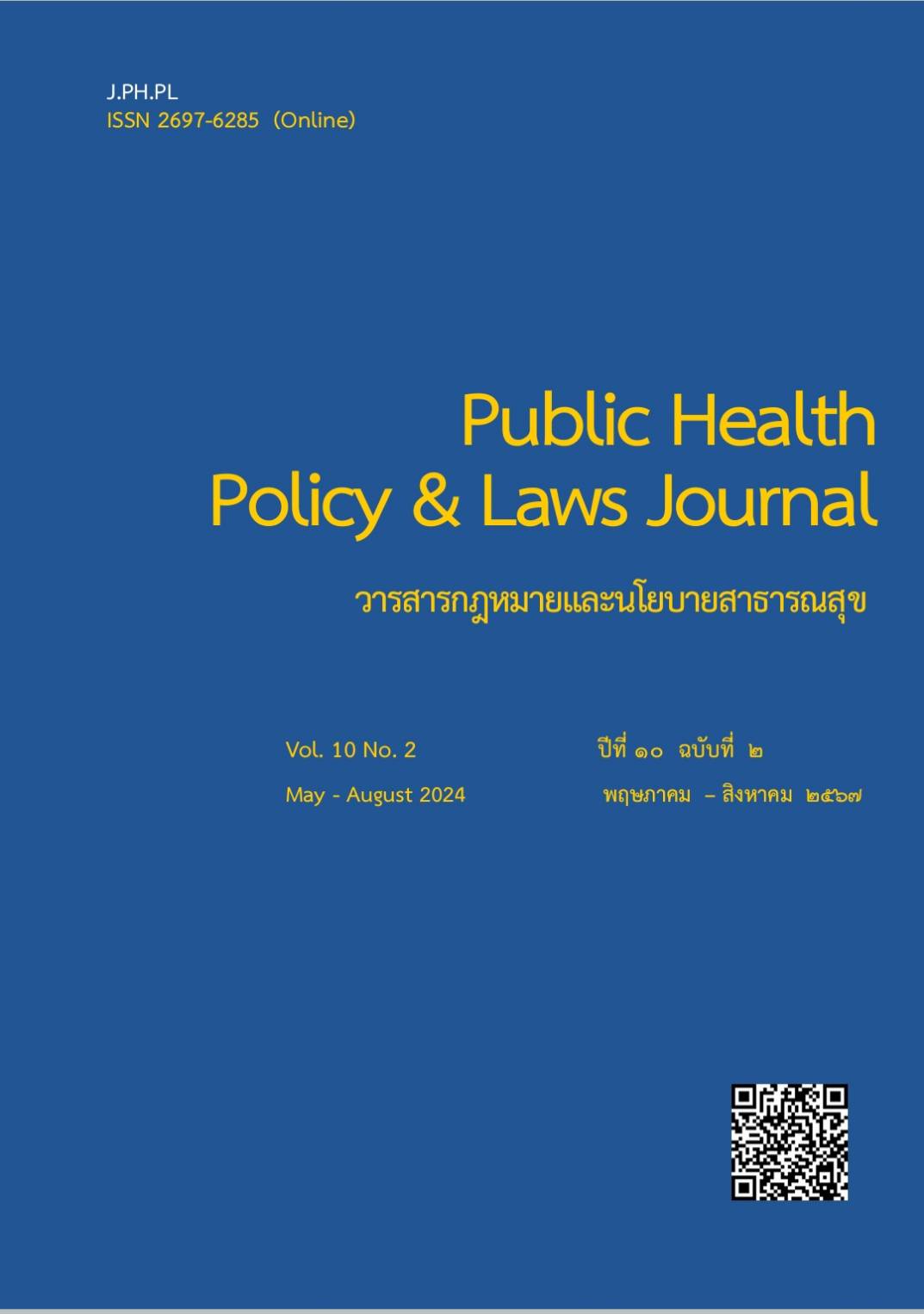The effectiveness of malaria elimination area management system toward a sustainable safety province
Keywords:
malaria, malaria elimination, area management, safety provinceAbstract
This is a study on the effectiveness of malaria elimination area management system toward a sustainable safety province in Nakhon Si Thammarat province. The study involved three sample groups: 51 individuals responsible for malaria elimination management, 375 general public and 157 students, both groups residing in B1 level areas. Data was collected through document for Safety Provincial Malaria Assessment form for the year 2022, group discussions, individual interviews, and questionnaires. Collected data analysed for descriptive statistics, and qualitative data analysed for content analysis.
Results indicated that the success factors are collaboration among all sectors, including health agencies, local administrative organizations, and people in the area. Effective management planning at all levels were necessary, including personnel, budgets, and equipment, according to provincial operational framework in all districts. This includes disease surveillance systems, inspection and treatment systems, disease prevention committees’ planning, supervision, monitoring, and evaluation systems, as well as appropriate resource mobilization or budget support.
The study also found that the level of knowledge, perception, and self-preventive behavior of both groups were at a good level. This was attributed to continuous education and activities carried out by health personnel at all levels, who had been actively monitor, assess knowledge, and conducting continuous mosquito vector control activities. The results of the review stage led to the development of policy recommendations for sustainable malaria elimination, encompassing planning, prevention and control, diagnosis, medical treatment guidelines, medical supplies management, staff’s capacity building, and emergency response measures during outbreaks.
References
Ministry of public health, Office of the permanent secretary united nations, Thailand. (2017). Twenty-year national strategy plan for public health. Available from: https://spd.moph.go.th/wp-content/uploads/2022/09/Ebookmoph20.pdf
Ministry of public health, Department of Disease Control, Bureau of Vector Borne Diseases, Thailand. (2019a). Guidelines for malaria elimination for District and Sub-District Public Health Officers (CDCU/SRRT). Nontaburi: Aksorn graphic and design.
Ministry of public health, Department of Disease Control, Bureau of Vector Borne Diseases, Thailand. (2019b). Guidelines for malaria elimination eradication for local government organizations and health networks. Nontaburi: Aksorn graphic and design.
Ministry of Public Health, Department of Disease Control, Bureau of Vector Borne Diseases, Thailand. (2019c). Guidelines for Malaria Elimination for Healthcare and Public Health Personnel in Thailand. Nontaburi: Aksorn graphic and design.
Ministry of Public Health, Department of Disease Control, Division of Epidemiology, Thailand. (2019d). Case definition for infectious diseases surveillance, Thailand, 2020. Nontaburi: Aksorn graphic and design.
Ministry of Public Health, Department of Disease Control, Division of Epidemiology, Thailand. (2019e). Basic disease control principles for SRRT. Nontaburi: Aksorn graphic and design.
Ministry of Public Health, Department of Disease Control, Bureau of Vector Borne Diseases, Thailand. (2020a). Thailand malaria survey 2020. Nontaburi: Aksorn graphic and design.
Ministry of Public Health, Department of Disease Control, Bureau of Risk Communication and Health Behavior Development, Thailand. (2020b). Crisis Risk Communication. Nontaburi. TS interprint.
Ministry of Public Health, Department of Disease Control, Bureau of Vector Borne Diseases, Thailand. (2021). Medical treatment guidelines for malaria fever patients in Thailand, 2021. Nontaburi: Aksorn graphic and design.
Ministry of Public Health, Department of Disease Control, Bureau of Vector Borne Diseases, Thailand. (2022). Guidelines for evaluating malaria-free province certification, 2022. Nontaburi: Aksorn graphic and design.
Ministry of Public Health, Department of Disease Control, Planning Division, Thailand. (2023). Guidelines for Disease Prevention and Health Hazard Management for the Area, 2024. Nontaburi: Aksorn graphic and design.
Pattra thongsuk and et al. (2020). Participation study in developing integrated malaria services, Tha Song Yang District, Tak Province. Bamrasnaradura Infectious Diseases Institute J., Vol 14 No.1, 2020.
Prapa nunthawarasilp. (2019). Research and development project on malaria management and surveillance system in the eastern region. Faculty of Public Health, Burapha University.
Nakhon Si Thammarat Provincial Public Health Office. (2021). Report on malaria in Nakhon Si Thammarat Province. Nakhon Si Thammarat.
Nakhon Si Thammarat Provincial Public Health Office. (2023). Report on malaria in Nakhon Si Thammarat Province. Nakhon Si Thammarat.
Saranath Lawpoolsri and et al. (2019). Epidemiological profiles of recurrent malaria episodes in an endemic area along the Thailand-Myanmar border: a prospective cohort study. Malar J. 2019;18(1):124.
United Nations Thailand. (2023). Sustainable Development Goals (SDGs). Available from: https://thailand.un.org/th/sdgs
Downloads
Published
How to Cite
Issue
Section
License
Disclaimer and Copyright Notice
The content and information presented in articles published in the Journal of Law and Public Health Policy represent the opinions and sole responsibility of the respective authors. The editorial board does not necessarily agree with or assume any responsibility for the views expressed.
All articles, data, content, images, and other materials published in the Journal of Law and Public Health Policy are the intellectual property of the journal. Any individual or organization wishing to reproduce, distribute, or otherwise use the entirety or any part of such materials must provide proper citation.





